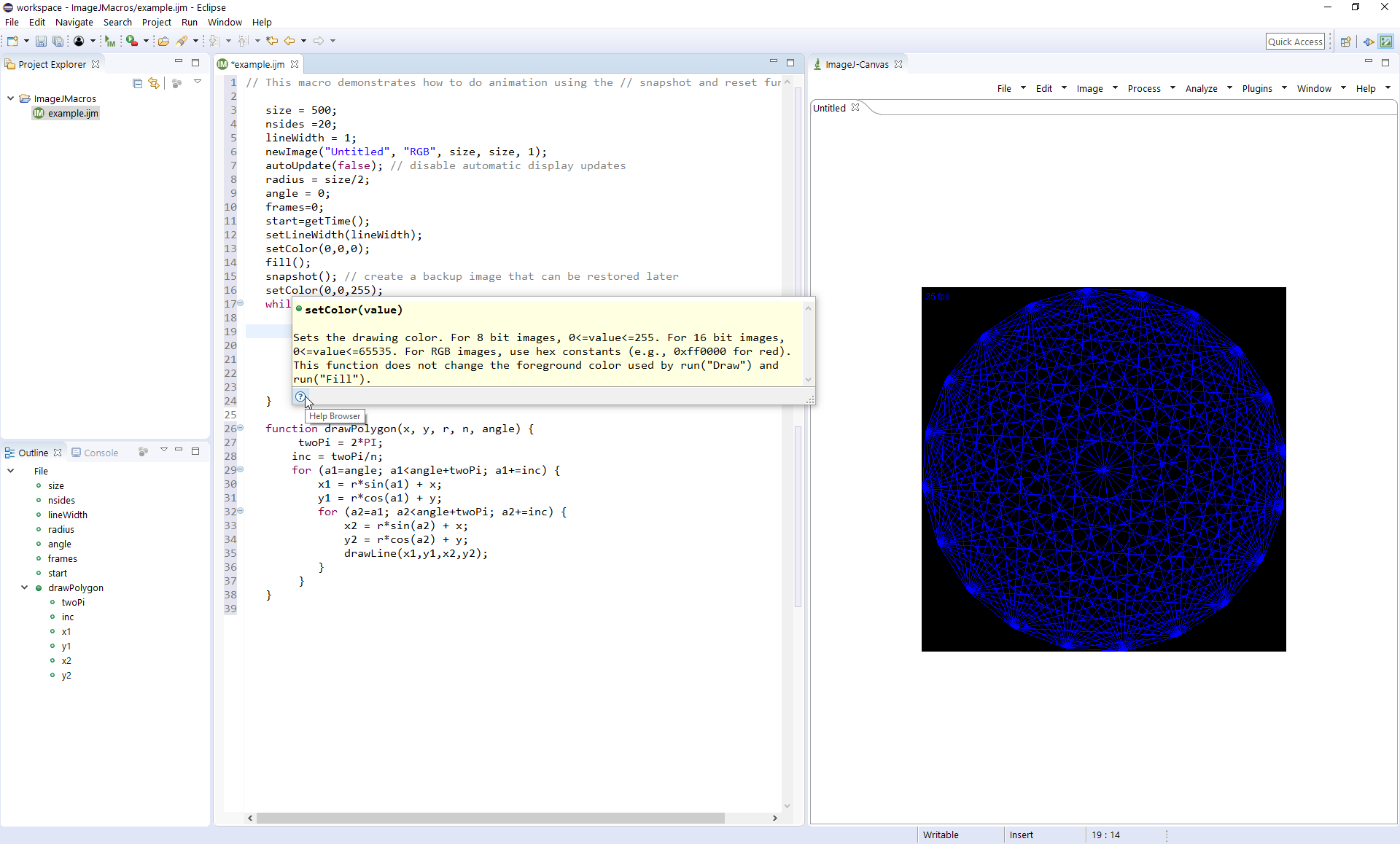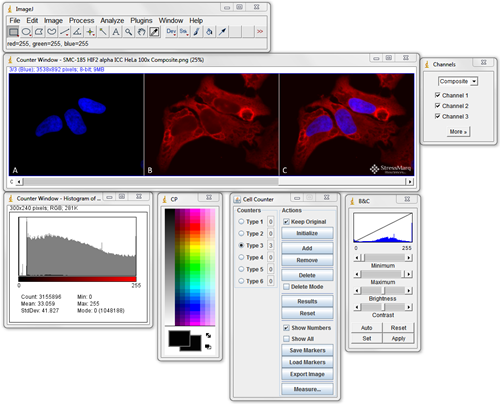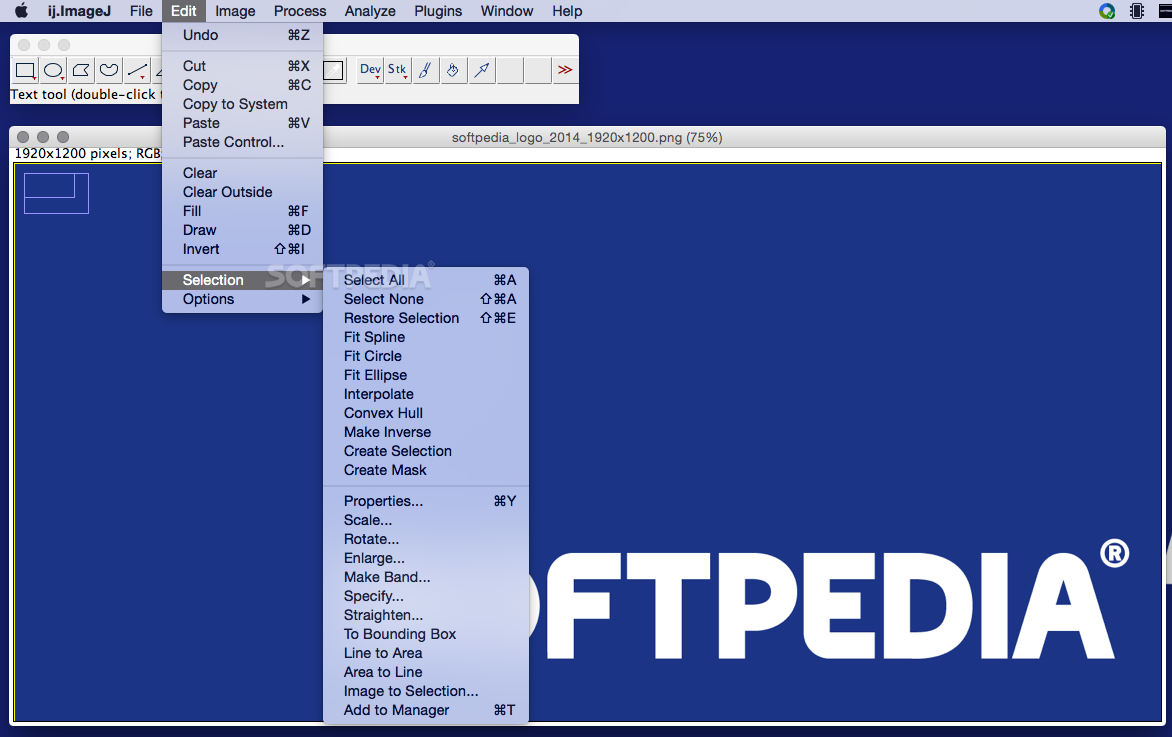

- #IMAGE J FOR MAC HOW TO#
- #IMAGE J FOR MAC INSTALL#
- #IMAGE J FOR MAC SOFTWARE#
- #IMAGE J FOR MAC DOWNLOAD#
- #IMAGE J FOR MAC MAC#
Scroll between the slices to see them and measure them separately (though you can use the “plugins>measure>measure all slices” tool to measure all slices more easily). Why are MSPEC images shown in black & white by default? Each channel of output from the camera is displayed in a separate (achromatic) slice.Use the “Make Presentation Image” tool to produce a simple RGB colour image for saving as a standard 8-bits per channel colour image.

#IMAGE J FOR MAC SOFTWARE#
MSPEC images are opened as 32-bits per channel images, and many other software packages won’t support images with this level of detail and display them correctly if you save them in this format.
#IMAGE J FOR MAC HOW TO#
MSPEC images are just text files that tell the toolbox how to open the RAW file(s) correctly (performing calibration and alignment). Can I open MSPEC images in photoshop/anything else? No.compression artefacts and reduced colour gamut compared to RAW images). Phones normally only output compressed images, adds extra problems (e.g. Mobile phone cameras are also unable to photograph in UV, which means only a limited number of animal visual systems could be mapped to. Can this software be rolled out for Android, iOS, Chromebook, or cloud processing? This could be done, but it would mean mapping the linearisation curves and spectral sensitivities of every different mobile phone camera, so in practice wouldn’t be worth doing.But you need to model the camera’s linearity function first. This box enables the software to work with non-RAW images, such as JPG or TIFF images. Make sure you haven’t ticked the “non-raw” box. I get an error when the program tries to load an image.If the ImageJ folder is in /Applications you will need to hold down the alt key while dragging ImageJ.app out of the ImageJ folder.” This is due to something called path randomisation (see here): “You can disable path randomization by moving ImageJ.app out of the ImageJ folder and then copying it back. Using MacOS Sierra some of the functions don’t appear in the plugins menu.Tutorial Video (note the new site and videos here are more relevant) MacOS 10.12 Sierra users, you need to copy the ImageJ.app file out of the ImageJ directory and paste it back in to get plugins to work.
#IMAGE J FOR MAC MAC#
#IMAGE J FOR MAC INSTALL#
#IMAGE J FOR MAC DOWNLOAD#
Download the version of the toolbox for your operating system, unzip the files and place them in your imagej/plugins folder.

The new home of the micaToolbox, user guide, and community support is This toolbox requires a working installation of ImageJ.

Our toolbox can combine photographs taken through multiple colour filters, for example allowing you to combine normal photographs with UV photographs and convert to animal vision across their whole range of sensitivities. Many animals can see down into the ultraviolet (UV) spectrum, such as most insects, birds, reptiles, amphibians, some fish and some mammals, so it is important to measure UV when working with these animals. We have developed a toolbox that can calibrate images using many common consumer digital cameras, and for some cameras the images can be converted to “animal vision”, to measure how the scene might look to non-humans. Some scientists are aware of these issues, but lack convenient, user-friendly software to work with calibrated images, while many others continue to measure uncalibrated images. This means that pixel values cannot be reliably compared between different photos or even regions within the same photo unless the images are calibrated to be linear and have any lighting changes controlled for. However, in normal ‘uncalibrated’ digital photographs the pixel values do not scale linearly with the amount of light measured by the sensor. Multispectral Image Calibration and Analysis Toolboxĭigital cameras can be powerful tools for measuring colours and patterns in a huge range of disciplines.


 0 kommentar(er)
0 kommentar(er)
